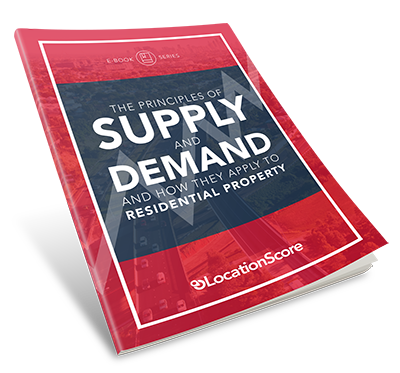×

The Principles of Supply and Demand and How They Apply to Residential Property
We Only Send You Awesome Stuff

LocationScore
|
June 1, 2017
Bryce: Alright, well I’m with the Location Score Lads here and we want to talk about all things Days on Market (DOM) so the obvious question is, what is it and how do you measure it?
Ben: Yeah so what we're trying to measure is the time the property appears on the search engines or multiple search engines. So it's listed, we get to see it's a new product for sale, and then we basically see how long it remains uploaded for sale. Then obviously, when we see that it disappears, we trap that for that single property, and then we're doing that obviously for potentially hundreds of thousands of properties across Australia.
Bryce: And it's really important to because you want to, you know something that stays on the market really long would suggest that there might be at face value and isolation, it might be a bit stale. Whereas if it's a really short Days on Market, it could be a sign that it's a seller’s market, but it's a really good sign that the demand is exceeding the supply.
Jeremy: Yeah I mean you picked your own market where demand clearly exceeds supply and everyone's seen this. You turn up to an auction and dozens of bidders scrambling over each other, trying to get this particular property. And you can see that a property like that is going to sell really quickly and so there's this correlation between a low Days on Market, and high demand versus supply in the market. So it's a great indicator.
Bryce: And it's one of those ones where investors can quite easily draw upon. Because if they see that in the market place, particularly if the other indicators. Short Days on Market they can see quite quickly. If they stay on quicker, they can intuitively have a handle on it quickly.
Ben: but it's really hard isn't it. I mean at the end of the day, if you're trying to do it yourself, you've got alright, I'm going to watch these 17 properties, see when they come off and go. 17 properties isn't going to be enough to work it out. Because ultimately what you're looking for is a trend where Days on Market are coming in. Because that's where one of the variables, not the only variable. One of the variables that is just basically saying, "well this is interesting" and then you're trying to score aren't you. So what's a reliable measure for Days on Market and a good score Jeremy?
Jeremy: Well a good score for Days on Market, I mean it varies tremendously depending on the market. But typically in Australia, we're looking now at around 4 or 5 months. But of course, people who have got from Sydney or Melbourne will be well aware things can get snapped up in days. So it varies tremendously on the market, and that's why it's such a good indicator because it can indicate those markets that you should be investing in. I would suggest that anything above 3 months is an alarm bell, and anything less than a month is exceptional.
Ben: Yes, but just be mindful everyone, that don't just try and use that as your only indicator. The science behind the DSR engine and the Location Score, is really about basically looking in totality. Not just one particular variable is it.
Bryce: And it's kind of like, you need to get the context too. When someone is actually incorrectly measuring an individual property, and they're not getting the context of the overall suburb, that's a danger too because if you've got a dud property, and everything is a weatherboard in the suburb and you're looking at a brick, and no one is expecting the brick, the Days on Market will look different to the context of the suburb so it's important to think granular and of the big picture.
Jeremy: Yes, I think grab as much data for as many properties in that market as possible. Over a significant period of time to come up with a reliable figure, there are things that affect the reliability. You could have a tardy real estate agent just trying to leave the property on the advertising website for a few more days, maybe even a week after the property has...
Ben: Bit of extra promotion
Jeremy: That's right, and...
Ben: "Look at me I've sold it"
Jeremy: ...and on the other side you could have off market sales where you don't even see the property so that could affect the calculation. So it's something you can't look at in isolation, you can't rely on 100% but when you've got it right, it is an excellent indicator.
Ben: It is. It is a terrific demand and supply indicator.
Bryce: So there you go folks, that's unpacking the Days on Market.
Note: This is just a brief explanation on Days On Market. If you are interested to learn how you can apply this in your own research, our upcoming webinar will unpack this in more details. Learn more about our webinar here.
Most Popular Blog Posts